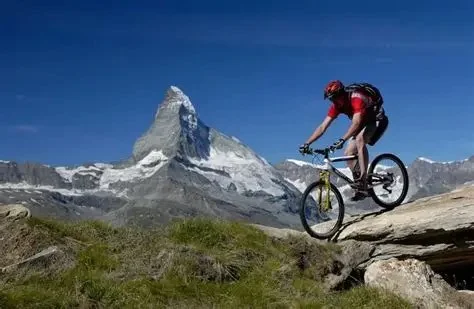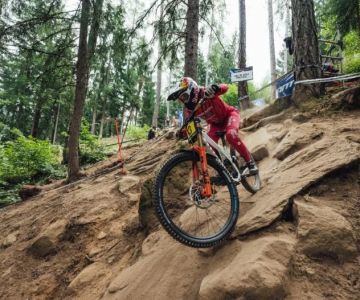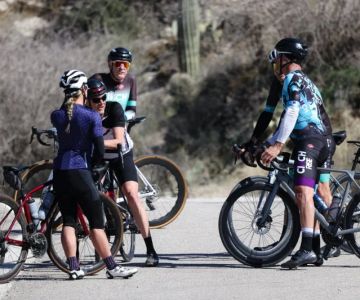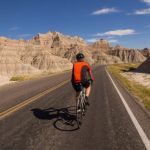
- what-makes-a-bike-climb-truly-challenging
- mauna-kea-hawaii-the-king-of-climbs
- mount-washington-new-hampshire-steep-and-unforgiving
- beartooth-pass-montana-and-wyoming-scenic-brutality
- palomar-mountain-california-a-riders-testing-ground
- tips-for-training-and-preparing-for-americas-toughest-rides
- why-cycling-guider-is-your-ultimate-climbing-companion
1. What Makes a Bike Climb Truly Challenging?
Not all climbs are created equal. When we talk about the most challenging bike climbs in the U.S., we’re not just referring to elevation gain — though that’s a major factor. What sets the true beasts apart are combinations of steep gradients, altitude, length, erratic weather, and minimal recovery sections. Some climbs are psychological battles, while others are sheer tests of physical willpower.
One of the key metrics many cyclists use is “gradient over distance,” but local weather and road conditions can elevate a difficult ride into a legendary one. This is where mental stamina becomes as important as your power output.
2. Mauna Kea, Hawaii – The King of Climbs
2.1 Overview
Considered by many as the hardest bike climb in the United States — and possibly the world — Mauna Kea starts near sea level and rises more than 13,800 feet over 42 miles. The gradients increase relentlessly, with the final few miles climbing through loose volcanic gravel and thin mountain air.
2.2 Cyclist Experience
John M., a triathlete from Colorado, described the last 7 miles as “soul-crushing.” He trained for four months before attempting it and had to walk his bike for sections near the summit. That’s how real it gets.
2.3 What Makes It Brutal?
Extreme altitude gain, terrain transitions (paved to gravel), and sudden temperature drops make Mauna Kea not just a ride, but a rite of passage.
3. Mount Washington, New Hampshire – Steep and Unforgiving
3.1 Why It’s Infamous
Though only 7.6 miles long, the Mount Washington Auto Road climbs over 4,600 feet with an average grade of 12% — peaking at 22%. Riders often say it feels like an hour-long sprint uphill with no chance to recover.
3.2 Conditions That Test You
Its weather is notoriously unstable, even in summer. Strong headwinds and cold mists appear without warning. In fact, the annual “Mount Washington Hillclimb” is sometimes canceled last minute due to wind gusts over 70 mph.
4. Beartooth Pass, Montana and Wyoming – Scenic Brutality
4.1 A High-Elevation Giant
Peaking at nearly 11,000 feet, Beartooth Pass is not just a climb — it’s an epic journey. With switchbacks that offer spectacular alpine views, the ride is breathtaking in more ways than one.
4.2 Rider’s Perspective
Unlike shorter punchy climbs, Beartooth is a long-haul effort. Cyclists need to pace themselves for altitude sickness and rapid temperature changes. Some pros compare it to Tour de France-style climbs in terms of endurance demands.
5. Palomar Mountain, California – A Rider’s Testing Ground
5.1 Why Local Legends Train Here
With over 4,200 feet of elevation gain in 12 miles, Palomar is a favorite among Southern California’s elite cyclists. Its consistent grade of 7% and over 20 switchbacks make it a technically beautiful but mentally demanding ride.
5.2 Story from the Saddle
A San Diego cycling club once hosted a 3-day climbing challenge — Palomar on day one, Mount Baldy on day two, and Big Bear on day three. Riders who finished all three were nicknamed “Climb Kings.”
6. Tips for Training and Preparing for America’s Toughest Rides
6.1 Physical Conditioning
Train with a mix of endurance rides, high-intensity interval training (HIIT), and back-to-back climbing days. Core strength and flexibility are just as important as leg power, especially when tackling technical descents afterward.
6.2 Nutrition and Recovery
Fuel early and often. Electrolytes are crucial, especially in dry, high-altitude regions. Post-ride recovery — with protein, hydration, and rest — is key to long-term performance gains.
6.3 Mental Fortitude
Visualization techniques, mantras, and practicing on local hills before the big day all contribute to preparing your mind. Some climbs require more mental discipline than physical ability.
7. Why Cycling Guider Is Your Ultimate Climbing Companion
Planning your next two-wheeled adventure? Whether you’re scouting gear for a Beartooth Pass ride or choosing the best training plan for tackling Palomar Mountain, Cycling Guider is your go-to destination for expert-backed tips, product reviews, and curated climbing routes.
The most challenging bike climbs in the U.S. aren’t just rides — they’re stories waiting to be written. With the right preparation and trusted resources by your side, your next climb could be your greatest victory yet.







 Billet BMX5.0 (2 reviews)
Billet BMX5.0 (2 reviews) Far East Children Bicycle Factory1.0 (1 reviews)
Far East Children Bicycle Factory1.0 (1 reviews) Archer Motorsports, Inc.4.0 (8 reviews)
Archer Motorsports, Inc.4.0 (8 reviews) YEP Bike Works4.0 (55 reviews)
YEP Bike Works4.0 (55 reviews) Gorham Bike & Ski4.0 (498 reviews)
Gorham Bike & Ski4.0 (498 reviews) Alchemy Bikes4.0 (37 reviews)
Alchemy Bikes4.0 (37 reviews) How to Teach Kids to Ride a Bike: A Step-by-Step Guide for Parents
How to Teach Kids to Ride a Bike: A Step-by-Step Guide for Parents Tips for Riding on Busy City Streets: Smart Strategies for Urban Cyclists
Tips for Riding on Busy City Streets: Smart Strategies for Urban Cyclists Best US National Parks for Mountain Biking: Ride Epic Trails Across America
Best US National Parks for Mountain Biking: Ride Epic Trails Across America Best Aero Helmets for Time Trials and Racing
Best Aero Helmets for Time Trials and Racing How to Clean and Lubricate Your Bike Chain Like a Pro
How to Clean and Lubricate Your Bike Chain Like a Pro 10 Must-Have Items for Long-Distance Cycling Trips
10 Must-Have Items for Long-Distance Cycling Trips